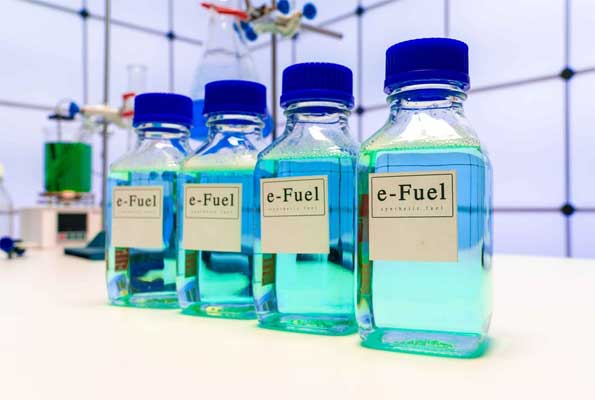Climate change and ever-depleting reservoirs of fossil fuels around the world have pushed nations and corporations toward alternative energy sources. Though lithium-powered electric car batteries seem to be at the forefront of clean energy, other technologies seem like better picks for the future of clean energy.
Electrofuels (e-fuels) are a class of synthetic fuels and a type of drop-in replacement fuel. They are manufactured using captured carbon dioxide, or carbon monoxide, together with hydrogen obtained from sustainable electricity sources such as wind, solar, and nuclear power.
The form of e-fuel is dependant on the method of production. Is it a power-to-gas or power-to-liquid process? Both methods include two or three phases, starting with hydrogen (H2) synthesis by water electrolysis from renewable electricity and another molecule, such as CO2 for e-crude and synthetic methane, methanol, or nitrogen (N2) for synthetic ammonia. Synthetic kerosene and diesel require refining, like fossil oil.
Synthetic hydrocarbons like e-methane, methanol, diesel, and kerosene require CO2 to produce. The atmosphere or fossil fuel-using industrial units can provide this essential ingredient. Different CO2 sources (biomass, industrial, and air) affect synthetic fuel lifetime analysis, environmental advantages, and manufacturing costs.
H2O/CO2 co-electrolysis produces synthetic crude oil at high temperatures. It starts with CO2 instead of renewable hydrogen, shortening the process. This boosts production by 30% and decreases investment expenses. However, the technique is still developing; therefore, most early production efforts use low-temperature electrolysis to produce hydrogen.
Once it’s been processed in refineries, this fuel can be used as eGas, eDiesel, eheating Oil, kerosene, and eGas, and it can fully replace regular fuels. Fuels can also be mixed with regular fuels in any amount because they can be dropped in. You can keep using the infrastructure you already have for shipping, distribution, and refuelling, like tank farms, tank trucks, pipelines, and gas stations.
Also, eFuels are climate neutral because they are made with power from renewable sources, and they only release as much CO2 when they are used as they did when they were being made.
Because of this, fuels can help the environment in any area where traditional fuels are used, like transportation or building energy.
eFuels can help with two problems that come up with the energy transition: storing green energy and moving it around. Renewable energies can be easily and cheaply made all over the world and sent anywhere they are needed using technologies that are already in use.
This is possible because e-fuels have a high energy density and can be moved at room temperature and pressure. The Fraunhofer Institute for Energy Economics and Energy System Technology put out the Global PtX Potential Atlas, which shows which areas are good for making fuels. The German Federal Ministry for the Environment paid for it.
The Aramco Deal
When multinational automotive manufacturing corporation, Stellantis, found that 24 engine families in European cars sold since 2014 are compatible with advanced eFuel without any changes to the powertrain, the world’s largest integrated energy and chemicals company, Aramco, gave substitute eFuels for the tests. This is the result of months of testing at its technical centres across Europe.
After that, Aramco ENOWA, the energy and water division of NEOM, entered into a cooperative development agreement to build and operate the world’s first synthetic electro-fuel (e-fuel) demonstration facility in Saudi Arabia.
It will be housed in ENOWA’s Hydrogen Innovation and Development Centre (HIDC) and its goal is to produce 35 barrels of low-carbon, synthetic gasoline per day from captured carbon dioxide (CO2) and renewable-based hydrogen, proving both technical and financial viability.
When finished, the integrated factory will use ThyssenKrupp Uhde-developed proprietary technology to produce 12 tons of synthetic methanol per day from green hydrogen and CO2.
Then, utilising ExxonMobil’s Fluidised-Bed Methanol-to-Gasoline (MtG) technology, the synthetic methanol will be transformed into low-carbon gasoline.
Moreover, the HIDC will create green hydrogen by utilising a 20-megawatt electrolyser that runs on renewable energy sources on the property. This is a major step towards the mass adoption of e-fuels.
Conclusion
Aramco has a market cap of USD 2.1 trillion and is the third-most valued company in the world. It has the lion’s share of the world’s energy sector.
A fossil fuel industry giant adopting an alternative method of energy for the futuristic desert city of NEOM is a leap towards sustainable energy sources, particularly e-fuels, which might overtake and dominate the transportation industry.



